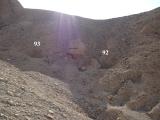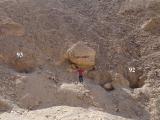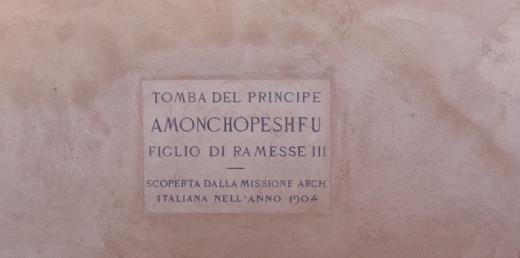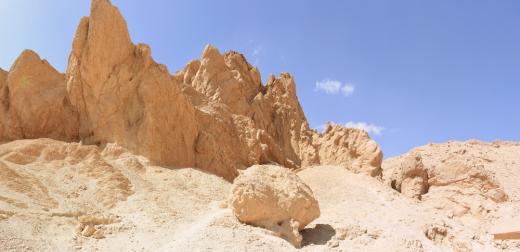QV 92
Anonymous
Entryway A
See entire tombA small, vertical shaft provides access to the tomb. A ledge at the bottom of the shaft is constructed of rough stones. The shaft is partially filled with debris resulting from upslope erosion and trash.
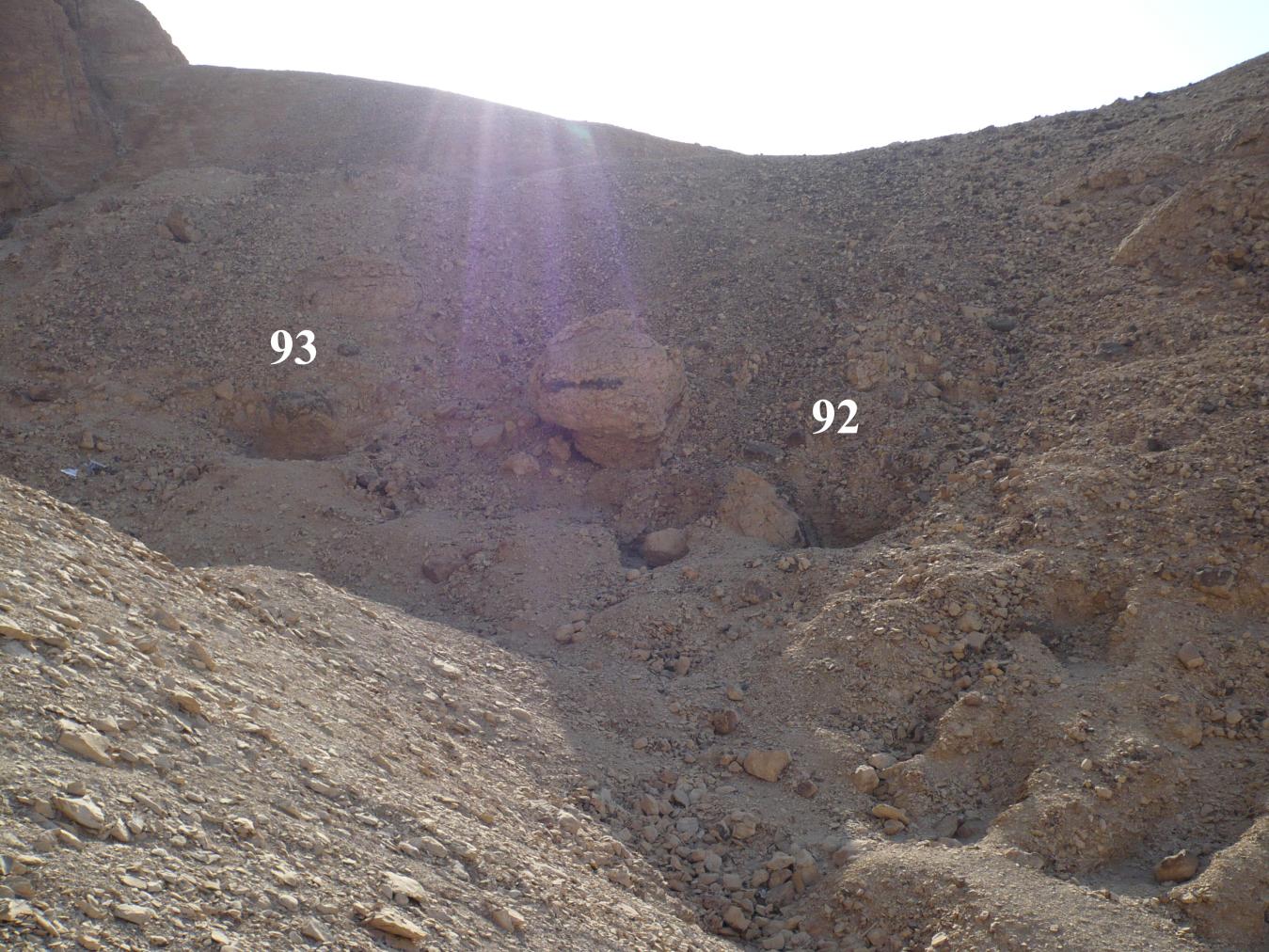
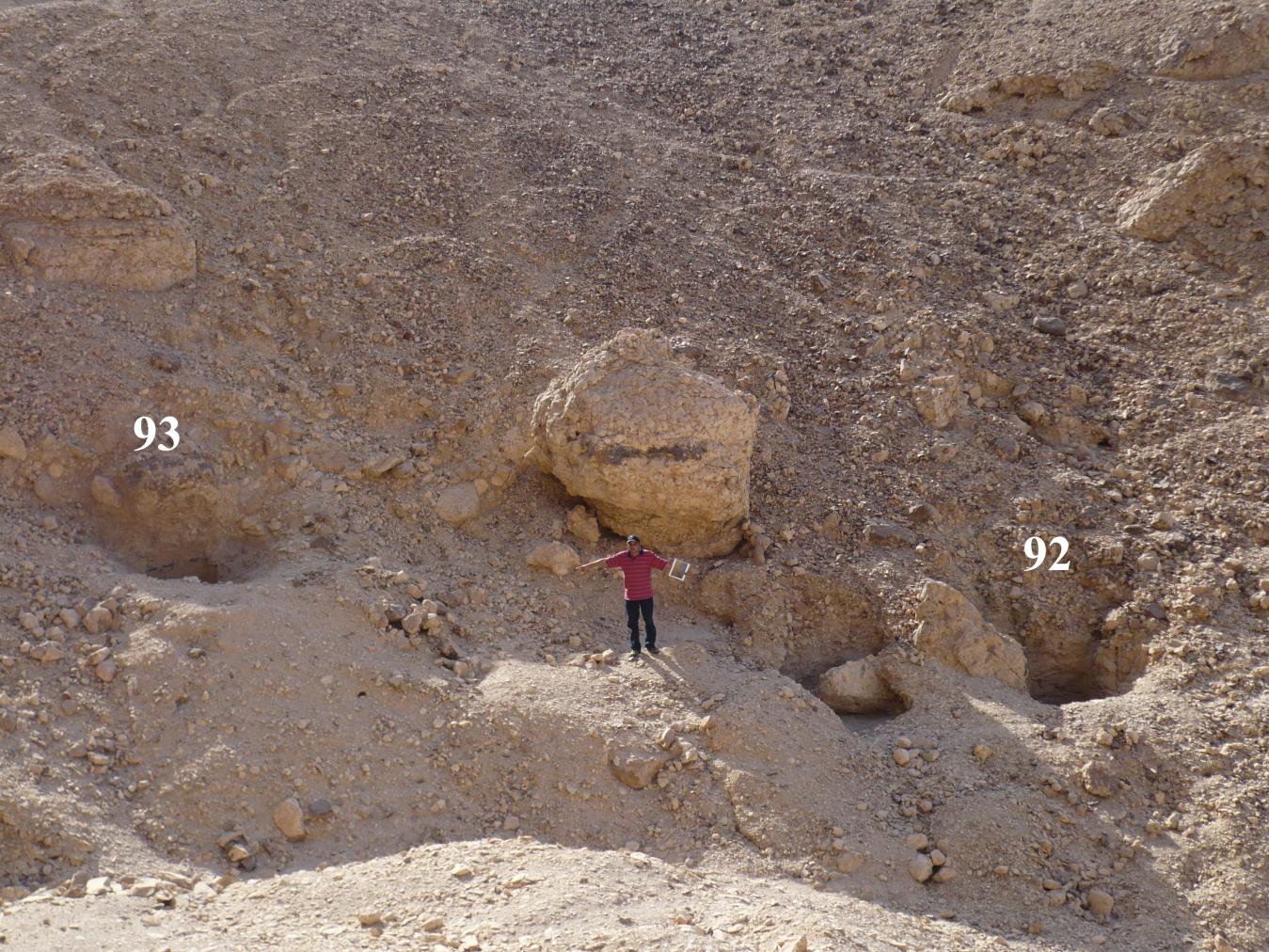
Burial chamber B
See entire tombA small burial chamber that is approximately the same width as the shaft and lies on axis with the entrance.
Chamber plan:
RectangularRelationship to main tomb axis:
ParallelChamber layout:
Flat floor, no pillarsFloor:
One levelCeiling:
Flat
About
About
QV 92 is a single-chamber shaft tomb located towards the head of the Valley of the Rope, to the north beyond the hill behind Dayr al-Rumi. The tomb was discovered by Ernesto Schiaparelli and the Italian Archaeological Expedition in 1903-1905. It consists of a small vertical shaft (A) and a burial chamber that is approximately the same width (B). The Franco-Egyptian Mission has speculated that QV 92 was carved during the beginning of the New Kingdom, possibly during the 18th Dynasty. As with other 18th Dynasty tombs in the area, it was not decorated
Noteworthy features:
QV 92 is a single-chambered shaft tomb.
Site History
The tomb was constructed during the 18th Dynasty.
Dating
This site was used during the following period(s):
Exploration
Conservation
Site Condition
Given the relatively remote location and comparatively deep shaft, it was not possible for the GCI-SCA to assess the interior of this tomb. However, the shaft itself seems to be in good condition, composed of high quality marl punctuated by occasional bands of chert nodules. The shaft is partially filled with debris resulting from upslope erosion and trash. Debris eroding from the slope above the tomb will gradually fill its shaft. Water also continues to infiltrate the tomb, due to the fact that it is located adjacent to a small, natural drainage path.


Articles
Tomb Numbering Systems in the Valley of the Queens and the Western Wadis
Geography and Geology of the Valley of the Queens and Western Wadis
Bibliography
Černý, Jarosłav, Christiane Desroches-Noblecourt and Marcel Kurz. Graffiti de la Montagne thébaine, I/1. Cartographie et étude topographique illustrée. Collection scientifique du CEDAE-CNRS. Cairo, 1969-1970.
Demas, Martha and Neville Agnew (eds). Valley of the Queens. Assessment Report. Los Angeles: The Getty Conservation Institute, 2012, 2016. Two vols.
Kurz, Marcel. Graffiti de la montagne thébaine: II, 4: plans de position. Cairo: Centre d'études et de documentation sur l'ancienne Egypte, 1973.
Leblanc, Christian and Magdi Mohamed Fekri. L’exploration archéologique des vallées laterales de tA st nfrw. Atti del Sesto Congresso Internazionale di Egittologia. Vol. 1. Turin: International Association of Egyptologists, 1993: 259-268.

